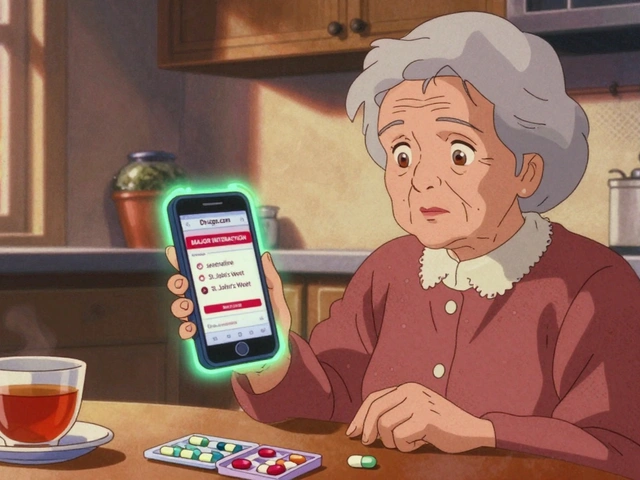
Every year, millions of people in Canada and the U.S. reach for an OTC pain reliever, antihistamine, or heartburn pill without thinking twice. But here’s the thing: just because you can buy it off the shelf doesn’t mean it’s always the right choice. Knowing when to use OTC medications versus when to see a doctor for a prescription can save you time, money, and even prevent serious complications.
What Exactly Are OTC Medications?
Over-the-counter (OTC) medications are drugs you can buy without a doctor’s note. They’re regulated by the FDA and approved for self-treatment of common, mild conditions. Think ibuprofen for a headache, loratadine for seasonal allergies, or omeprazole for occasional heartburn. These aren’t weak or low-quality drugs-they’re simply designed to be safe enough for people to use on their own, with clear instructions on the label.
There are more than 100,000 OTC products on the market in the U.S. alone, using around 800 active ingredients. That’s a lot of options. And because they’re meant for short-term use, their dosages are kept lower than prescription versions. For example, hydrocortisone cream you can buy at the pharmacy is 1%, but your doctor might prescribe 2.5% for stubborn eczema. Same ingredient, different strength, different purpose.
When Prescription Medications Are Necessary
Prescription drugs are for conditions that need professional oversight. That means your body’s response needs to be monitored, or the risk of side effects is too high for self-management. High blood pressure, diabetes, thyroid disorders, depression, and chronic migraines fall into this category. These aren’t just "stronger" versions of OTC drugs-they often work in completely different ways.
Take migraines. If you get a headache once a month and Tylenol or Advil helps, you’re likely fine sticking with OTC. But if you’re having 10 or more migraine days a month, with nausea, light sensitivity, and lasting hours, OTC won’t cut it. Prescription triptans like sumatriptan work faster and target the root cause of the migraine, not just the pain. OTC meds might take 30 to 60 minutes to kick in. Triptans? Often under 20. That difference matters when you’re stuck in a dark room, unable to move.
Another example: heartburn. OTC esomeprazole (Nexium) is great for occasional acid reflux. But if you’re taking it daily for more than two weeks and still feeling that burning, you could have GERD, a hiatal hernia, or even Barrett’s esophagus. Those need a doctor’s diagnosis-and possibly a different treatment plan.
The Rx-to-OTC Switch: Why Some Drugs Move Off Prescription
It’s not just about what’s available OTC-it’s also about what’s no longer prescription-only. Over the past 15 years, more than 15 major drugs have made the switch from prescription to OTC. Fexofenadine (Allegra), adapalene (Differin for acne), and even the emergency allergy epinephrine auto-injector (EpiPen) are now available without a script.
This shift happens after years of safety data prove the drug won’t be misused, has minimal interactions, and comes with clear labeling. The FDA’s OTC Monograph Reform under the CARES Act of 2020 made this process faster and more transparent. Experts predict 20 to 25 more medications will follow by 2030, especially in allergy, contraception, and topical treatments.
But here’s the catch: just because a drug moved to OTC doesn’t mean it’s right for everyone. Someone with a history of kidney disease might still need a doctor’s approval before taking naproxen, even if it’s now sold next to cough drops.

Cost Isn’t Always What You Think
A lot of people assume OTC is cheaper. Sometimes it is. A 100-tablet bottle of generic ibuprofen 200mg costs about $4. Brand-name Advil? Around $15. But if you have insurance, your prescription version might be $5 or even free. Medicare Part D covers many common meds, and pharmacy discount programs like GoodRx can bring prescription prices down to OTC levels.
And here’s where people get burned: they switch from a prescription to the OTC version without realizing the dosage is different. A friend might say, “I take 75 mg of ranitidine for heartburn,” so you buy the same OTC version. But your doctor prescribed 150 mg. You’re underdosing. Symptoms don’t improve. You think the medicine doesn’t work. It’s not the drug-it’s the dose.
Red Flags: When OTC Isn’t Enough
OTC meds are great for short-term relief. But if any of these happen, stop using them and call your doctor:
- Symptoms last longer than 7-10 days
- Pain gets worse instead of better
- You develop new symptoms (rash, fever, dizziness, swelling)
- You’re taking more than the recommended dose to get relief
- You’re using OTC meds daily for more than two weeks
These aren’t just warnings on the bottle-they’re signs your body is signaling something deeper. A persistent cough might be allergies. Or it could be asthma. Or early pneumonia. You can’t tell by reading a label.
What Pharmacists Can Help You With
Pharmacists are your secret weapon. They’re not just the people who hand you the pills. In Canada and the U.S., 89% of community pharmacists regularly counsel patients on whether an OTC option is appropriate. They know drug interactions, allergies, and what your insurance covers.
Walk into a pharmacy and say, “I’ve been taking this OTC painkiller for my back, but it’s not working.” They’ll ask questions: How long? What else are you taking? Do you have kidney issues? Then they’ll tell you if you need a stronger option-or if you should see your doctor for imaging or physical therapy.
Don’t feel like you’re bothering them. They’re trained for this. And it’s free.

Common Conditions: OTC or Prescription?
Let’s break down a few everyday issues:
- Headache: OTC (ibuprofen, acetaminophen) works for occasional tension headaches. If you have more than 10 per month, or if they wake you up at night, see a doctor. Could be migraines, high blood pressure, or sleep apnea.
- Allergies: OTC antihistamines (cetirizine, loratadine) are fine for sneezing and itchy eyes. If you’re still struggling after a week, or you have nasal congestion that won’t clear, you might need a nasal steroid spray-which is prescription-only.
- Heartburn: OTC proton pump inhibitors (omeprazole) are safe for occasional use. If you need them more than twice a week for over two weeks, get checked. Long-term use without diagnosis can mask serious issues.
- Acne: OTC benzoyl peroxide or adapalene (now available OTC) helps mild breakouts. If you have cystic acne, scarring, or it’s not improving in 8 weeks, you need a dermatologist. Prescription retinoids and antibiotics work differently and faster.
- Fever: OTC acetaminophen or ibuprofen can reduce fever. But if you have a fever over 103°F for more than 48 hours, or it’s accompanied by stiff neck, confusion, or rash, go to urgent care. That’s not a cold-it could be meningitis.
How to Use OTC Medications Safely
Just because it’s available doesn’t mean it’s harmless. Here’s how to avoid common mistakes:
- Read the label. Every ingredient matters. Many OTC cold meds contain acetaminophen. Taking extra Tylenol on top? You could overdose and damage your liver.
- Check for interactions. OTC meds can interfere with blood thinners, antidepressants, or even herbal supplements like St. John’s Wort.
- Don’t mix with alcohol. Ibuprofen and alcohol together raise your risk of stomach bleeding. Acetaminophen and alcohol? That’s a recipe for liver failure.
- Use the lowest effective dose. You don’t need to take 800 mg of ibuprofen if 400 mg works.
- Keep track. Write down what you’re taking and how often. Bring it to your next doctor visit.
The Future: More OTC, But Still Know Your Limits
The trend is clear: OTC options are expanding. Contraceptive pills may soon be available over the counter. More migraine treatments will come in both OTC and prescription forms, with different delivery methods for different severity levels.
But this doesn’t mean you should stop seeing a doctor. It means you need to be smarter about when to use each. OTC meds are for self-limiting, minor issues. Prescription drugs are for when your body needs more than what you can fix yourself.
As Dr. Jessica Ailani from the American Migraine Foundation says, "OTC medications work well if you have symptoms that are mild to moderate." But if your life is being disrupted-if you’re missing work, avoiding social events, or losing sleep-you’re past the point where a shelf-stable pill will help.
There’s no shame in asking for help. The best medicine isn’t always the one you can buy without a prescription. Sometimes, it’s the one your doctor prescribes because they know your history, your body, and what’s really going on.
Can I switch from a prescription to an OTC version of the same drug?
Sometimes, yes-but only after talking to your doctor. The OTC version may have a lower dose or different formulation. For example, the OTC version of esomeprazole (Nexium) is 20 mg, while the prescription version can be 40 mg. Taking the OTC version without adjusting your expectations may lead to poor results. Your doctor can tell you if the switch is safe and what to expect.
Are OTC medications safer than prescription drugs?
Not necessarily. Both are FDA-approved and safe when used as directed. But OTC drugs are often used incorrectly because people assume they’re harmless. Taking too much acetaminophen, mixing painkillers with alcohol, or using NSAIDs for weeks without knowing you have ulcers-these are real risks. Prescription drugs come with professional guidance. OTC drugs rely on your judgment. That’s why reading labels and knowing your limits matters.
Why do some OTC meds take days to work?
Some OTC medications, like proton pump inhibitors (omeprazole, esomeprazole), don’t work right away. They reduce stomach acid production over time. You might not feel relief for 1-2 days, and full effect can take up to a week. That’s normal. If you expect instant results like an OTC painkiller, you’ll be disappointed. Always read how long it takes to work before you give up on it.
Is it okay to use OTC meds for chronic pain?
No. If you’re using ibuprofen, naproxen, or acetaminophen daily for more than two weeks, you’re masking a problem, not fixing it. Long-term NSAID use can cause stomach bleeding, kidney damage, or high blood pressure. Chronic pain needs a diagnosis-arthritis, nerve damage, muscle strain, or something else. A doctor can help you find the root cause and recommend safer, targeted treatments.
Can I give my OTC meds to someone else?
Never. Even if they have the same symptoms, their body reacts differently. One person might have kidney problems and not know it. Another might be on a blood thinner. A drug that’s safe for you could be dangerous for them. Medications are personal. What works for you isn’t a prescription for someone else.
If you’re unsure whether to use an OTC medicine or call your doctor, err on the side of caution. A quick phone call to your pharmacist or clinic can save you from complications down the road. Self-care is powerful-but only when it’s informed.





15 Comments
Been using OTC ibuprofen for years for my back pain until I started getting stomach issues. Didn’t realize it was the NSAID until my pharmacist asked if I was taking anything else. Turned out I had a small ulcer. OTC doesn’t mean harmless. Read the fine print. Always.
It is of paramount importance to underscore that the distinction between over-the-counter and prescription pharmaceuticals is not merely a regulatory technicality, but a fundamental safeguard rooted in clinical evidence and public health imperatives. Misapplication of OTC agents, particularly in chronic conditions, constitutes a significant epidemiological risk factor.
I work in a pharmacy and see this every day. People buy OTC heartburn meds and take them for months. Then they show up with chest pain and are shocked it’s not just ‘acid.’ We’re not here to judge. We’re here to help. Ask us. Seriously. We’ve got coffee and a clipboard.
Let me just say this-clearly, clearly, clearly-OTC meds are not toys. They’re not candy. They’re not ‘whatever I feel like taking today.’ And yet, people treat them like they’re free passes to self-diagnose their way into the ER. I’ve seen it. I’ve lived it. I’ve had to clean up the mess. Please. Please. Please. Read the label. Know your limits. Your liver will thank you.
USA thinks OTC is magic. India? We just take whatever’s cheap and hope. My uncle took 10 naproxen a day for his knee. Now he’s on dialysis. OTC doesn’t mean ‘safe for everyone.’ It means ‘safe enough for the FDA to not sue you.’
Who is really benefiting from this OTC expansion? The patients? Or the pharmaceutical conglomerates who just want to turn every prescription into a profit-driven impulse buy? Let’s not pretend this is about ‘access’-it’s about deregulation, and we’re the guinea pigs.
Hey-just wanted to say this article was so helpful. I’ve been taking OTC allergy pills for years and thought I was fine. Turns out I’ve had silent nasal polyps. My pharmacist noticed I was always reaching for the same bottle and asked if I’d ever been checked. I cried. She didn’t judge. She just helped. That’s what healthcare should look like.
People don’t understand how OTC meds work long term. Like they think if one pill helps a little, two will help twice as much. No. That’s not how pharmacology works. The liver doesn’t care if it’s OTC or Rx. It just sees the chemical. And if you’re taking ibuprofen daily for six months? You’re not managing pain-you’re slowly destroying your kidneys. And no one tells you that on the bottle. The label says ‘take as needed’ but doesn’t say ‘don’t make it your daily bread.’
Interesting how this article ignores the fact that most people who use OTC meds don’t read the labels. The ‘clear instructions’ are printed in 6-point font on a white background with 17 ingredients listed in Latin. This isn’t empowerment-it’s liability laundering.
THEY’RE TURNING EVERYTHING INTO OTC! NEXT THING YOU KNOW, WE’LL BE ABLE TO BUY ANTIBIOTICS AT THE GAS STATION! WHAT IS THIS, A POST-APOCALYPTIC DRUG MARKET?! I’M NOT KIDDING! MY COUSIN TOOK A FRIEND’S PRESCRIPTION ANTIBIOTIC AND GOT A CLOSTRIDIUM DIFFICILE INFECTION! NOW HE’S ON A FEEDING TUBE! THIS ISN’T FREEDOM-IT’S A TRAP!
OTC = government experiment. You think they want you healthy? Nah. They want you hooked on cheap meds so you never question the system. Check the ingredients. Look up the patents. Everything’s connected. 🤫
As someone who works in clinical research, I can confirm that the transition from Rx to OTC is a rigorous, multi-year process grounded in post-marketing surveillance, pharmacovigilance, and real-world outcomes data. It’s not a corporate gimmick-it’s evidence-based policy. That said, patient education remains the weakest link. We need better labeling, not just more access.
This article is so basic. I mean, really? You wrote 2000 words to say ‘don’t be dumb’? Anyone with a brain knows not to take OTC painkillers forever. This reads like a pamphlet from a pharmacy chain’s ‘wellness’ aisle. Yawn.
My grandma used to say if it’s on the shelf it’s for you. She took 4 Advil every night for 15 years. Died at 82. No regrets. She was happy. Maybe OTC isn’t perfect but it’s freedom. Who are you to say what I can take?
Let’s be real-this whole OTC thing is just another way for Big Pharma to make more money. You think they care if you have a headache? No. They care if you buy the bottle every month. That’s why they made it OTC. So you’d buy it again. And again. And again. And then you’ll need a new doctor to fix the damage. Classic.